East Terrace Garden, Windsor Castle
The East Terrace Garden is nestled amidst the sprawling grounds of Windsor Castle, a prestigious royal residence for over 1,000 years. This verdant oasis, steeped in history and boasting a meticulously designed layout, offers a glimpse into the private world of the British monarchy. Unveiling its rich tapestry, this comprehensive exploration delves into the East Terrace Garden’s creation, evolution, and significance.
Key Takeaways
| Key Takeaway | Description |
|---|---|
| Historical Significance | |
| Royal Retreat | Originally conceived as a private oasis for King George IV. |
| Wartime Transformation | Converted into vegetable plots during WWII to support the war effort. |
| Post-War Redesign | Prince Philip’s redesign in the 1970s introduced a more modern aesthetic. |
| Design and Layout | |
| Formal Geometry | Emphasizes symmetry and order with clipped yew hedges and geometric rose beds. |
| Central Fountain | The bronze lotus fountain, designed by Prince Philip, serves as a focal point. |
| Seasonal Plantings | The garden showcases a variety of flowers throughout the year, with roses being a prominent feature. |
| Public Access | |
| Limited Public Access | The East Terrace Garden is typically open to the public on weekends during the summer months. |
| Ticket Requirement | Visitors need a Castle Ticket or a 1-Year Pass from the Royal Collection Trust to access the garden. |
| Cultural Significance | |
| Reflection of Royal Tastes | The garden reflects the changing preferences of the British monarchy over time. |
| Symbol of British Culture | It embodies the tradition of private gardens as spaces for leisure and nature appreciation. |
| Unique Feature of Windsor Castle | The garden complements the castle’s grandeur and offers a serene escape. |
| Additional Points | |
| Sustainability | The garden incorporates native British species, reflecting a growing focus on environmental sustainability. |
| Historical Sculptures | The garden features historically significant sculptures, adding another layer of cultural interest. |
| Panoramic Views | The elevated terraces offer breathtaking vistas of the surrounding landscape. |
A Historical Journey Through the East Terrace Garden

A. Creation of the East Terrace Garden (1824–1826)
The East Terrace Garden’s origins lie in the vision of King George IV (reign 1820–1830). Upon ascending the throne, he found Windsor Castle lacking a dedicated private garden. Previously, the rolling fields of Little Park (now the private Home Park) stretched directly to the castle moat. In 1823, George IV ordered the closure of a public footpath that traversed Little Park, signifying a growing desire for privacy within the royal residence. This closure also paved the way for the creation of the East Terrace Garden.
1. George IV’s Vision: A Private Oasis
King George IV, known for his flamboyant tastes and interest in architecture, desired a visually pleasing vista from his newly constructed suite of apartments on the east facade of the castle. He envisioned a formal garden that would enhance the aesthetics and provide a tranquil retreat for the monarch.
2. Sir Jeffry Wyatville: The Architect Behind the Design
To bring George IV’s vision to life, the renowned architect Sir Jeffry Wyatville (1766–1840) was commissioned to design the garden. Wyatville, who had previously overseen extensive renovations at Windsor Castle, embraced the principles of neo-Gothic architecture. He envisioned a formal garden layout echoing the grandeur of the castle itself.
3. Transforming the Bowling Green: From Public Space to Royal Sanctuary
The chosen location for the East Terrace Garden posed a unique challenge. The site previously housed a bowling green, a popular recreational space used by the public since the reign of Charles II (reign 1660–1685) in the 1670s. Wyatville skillfully transformed the bowling green into a private royal garden, a testament to his design ingenuity.
B. The Garden During World War II (1939–1945)

The outbreak of World War II disrupted the serenity of the East Terrace Garden. With Britain facing food shortages, the emphasis on aesthetics shifted towards practicality. In a remarkable adaptation, a portion of the garden was converted into vegetable plots. A young Princess Elizabeth, who then resides at Windsor Castle with her sister Princess Margaret, is even known to have her own designated plot where she cultivates vegetables to support the war effort.
C. Post-War Transformations (1945–Present)
Following the war, the East Terrace Garden underwent a period of transition.
1. The Duke of Edinburgh’s Redesign (1971)
In 1971, Prince Philip, the Duke of Edinburgh, was keenly interested in the garden’s design. He commissioned a redesign to simplify the planting scheme and enhance the central focal point.
- The Introduction of the Bronze Lotus Fountain: A key element of the Duke’s vision was the addition of a new central fountain. He designed a bronze lotus fountain, adding a touch of elegance and symbolism to the heart of the garden. The lotus flower, a symbol of purity and rebirth, resonated with the spirit of renewal following the devastation of war.
- Simplifying the Planting Scheme: The post-war period shifted towards a more simplified one. While maintaining the formal layout, the earlier complex floral arrangements gave way to a more streamlined design focusing primarily on rose beds.
2. Public Access: Opening the Gates to the East Terrace Garden (2021–Present)
For decades, the East Terrace Garden remained a private sanctuary enjoyed solely by the royal family. However, in a historic move, the summer of 2021 witnessed the limited public opening of the garden for the first time in over 40 years. Nowadays, you can access the East Terrace Gardens with a Castle ticket or a 1-Year Pass from the Royal Collection Trust.
Exploring the Design and Layout

The East Terrace Garden’s enduring appeal lies in its history, meticulously designed layout, and vibrant plant life. Delving into these aspects, we deeply appreciate the garden’s unique character.
A. Formal Geometry: A Hallmark of the East Terrace Garden
Strict adherence to formal geometry is a defining characteristic of the East Terrace Garden, reflecting the architectural style prevalent during its creation. Key elements contribute to this sense of order and symmetry:
1. The Central Fountain: A Focal Point
Dominating the garden’s centre is the striking bronze lotus fountain, designed by Prince Philip in 1971. The symmetrical design of the fountain, with its cascading water and lotus motif, draws the eye inward and acts as a central organizing element.
2. Clipped Yew Domes and Geometric Rose Beds
Lush green yew hedges, meticulously sculpted into geometric domes, flank the garden’s central axis. These evergreen structures provide a sense of permanence and a backdrop for vibrant floral displays. Complementing the yew hedges are expansive rose beds arranged in symmetrical patterns. The repetition of shapes and the play between straight lines and curves create a sense of harmony and visual balance.
3. Terraces Offering Panoramic Views
The East Terrace Garden is on multiple levels, offering stunning panoramic vistas. Elevated terraces descend towards the south, providing breathtaking views of the surrounding landscape, including the Long Walk and the River Thames. This multi-level design adds depth and dynamism to the overall layout.
B. Plant Life and Color Palettes
While the formal layout provides the foundation, the true magic lies in the vibrant tapestry of plant life.
1. The Rose Collection: A Fragrant Tapestry
Roses undoubtedly reign supreme in the East Terrace Garden, boasting a collection renowned throughout Britain. The rose beds showcase diverse varieties, from classic hybrid teas to fragrant climbers, carefully chosen to offer a spectrum of colours and blooms throughout the season. The carefully curated colour palette, often emphasizing elegant pastels and classic reds, adds a touch of sophistication and complements the formal design.
2. Seasonal Variations and Color Schemes
Beyond roses, seasonal plantings punctuate the garden with vibrant splashes of colour. During spring, tulips and daffodils paint the landscape with cheerful hues. Summertime brings forth vibrant displays of delphiniums, lilies, and salvias. Autumn ushers in a warm palette, with chrysanthemums and dahlias adding their richness. These seasonal variations ensure a dynamic visual experience throughout the year.
3. The Influence of Royal Taste on Plant Selection
The garden’s specific plant selection reflects the reigning monarchs’ personal preferences. While roses have always been constant, historical records suggest earlier plantings incorporated a wider variety of flowers, including hyacinths and carnations. Further research on the official website or historical sources may reveal the specific timeframe for these earlier plantings.
In recent years, there has been an emphasis on introducing native British species, reflecting a growing interest in sustainability and ecological balance within the Royal Gardens. This interplay of formal geometry, vibrant plant life, and thoughtful colour palettes makes the East Terrace Garden a captivating visual feast for the senses.
The East Terrace Garden: A Symbol and Cultural Legacy

The East Terrace Garden transcends its role as a beautiful green space. It serves as a potent symbol, reflecting the changing tastes and priorities of the British monarchy, and holds a significant place within British cultural heritage.
A. A Reflection of Royal Life and Changing Tastes
The design and evolution of the East Terrace Garden offer a window into the personal lives and preferences of the monarchs who have resided at Windsor Castle.
1. George IV’s Desire for Privacy and Aesthetic Grandeur
King George IV’s decision to create the garden stemmed from his desire for a private retreat within the castle walls. The formal layout and choice of plants reflected his appreciation for aesthetics and symmetry.
2. World War II and the Adaptation for Practicality
The stark transformation of the garden during World War II, with its conversion to vegetable plots, highlights the monarchy’s ability to adapt to changing circumstances and contribute to the war effort. Princess Elizabeth’s participation in growing vegetables further emphasizes the garden’s role in national unity during a crisis.
3. Post-War Redesign and Modernization
The post-war redesign under the Duke of Edinburgh reflects a more streamlined and contemporary aesthetic shift. Introducing the bronze lotus fountain adds a touch of modernity while retaining the garden’s overall formality.
By examining these changes, we gain a deeper understanding of the British monarchy’s evolving priorities and tastes over the past two centuries.
B. The Importance of Private Gardens in British Culture
Private gardens have long held a significant place in British culture, serving as sanctuaries for reflection, leisure activities, and a connection to nature. The East Terrace Garden embodies these ideals. For instance, the use of geometric design and meticulously maintained yew hedges reflects a long tradition of formal gardens in Britain.
C. The East Terrace Garden: A Jewel in the Crown of Windsor Castle
The East Terrace Garden serves as a unique gem within the sprawling complex of Windsor Castle. Its formal design complements the grandeur of the castle architecture, while its vibrant plant life adds a touch of serenity and natural beauty. The limited public access granted in recent years allows visitors a rare glimpse into this hidden treasure, further enriching the overall visitor experience of Windsor Castle. The addition of historically significant sculptures throughout the garden offers another layer of cultural appreciation for visitors.
The East Terrace Garden’s symbolic significance and place within the broader context of British cultural heritage add another layer of appreciation for this unique space.
Conclusion
The East Terrace Garden stands as a testament to the enduring power of beauty and tranquillity amidst the grandeur of Windsor Castle. Its meticulously designed layout, vibrant tapestry of plant life, and rich history offer a captivating experience for visitors.
From its creation as a private royal retreat to its recent transformation into a space accessible to the public, the garden has served as a symbol of changing tastes and unwavering dedication to maintaining a haven of beauty within the castle walls.
The East Terrace Garden, bathed in history and adorned with vibrant flora, continues to be a jewel in Windsor Castle’s crown. In this place, the stories of the past intertwine with the present, offering a glimpse into the private world of the British monarchy.
FAQs
Can I visit the East Terrace Garden?
Visiting the East Terrace Garden at Windsor Castle is possible but with limited availability. The gardens are typically open to the public on weekends during the summer months. However, specific opening dates and times can vary. It’s highly recommended to check the official website of the Royal Collection Trust for the latest information on public access dates and times for the East Terrace Garden.
A general Castle Ticket or 1-Year Pass from the Royal Collection Trust will grant you entry during open periods, allowing you to explore the formal layout, rose beds, and central fountain while enjoying scenic views of Windsor Great Park.
What is the best time to visit the East Terrace Garden?
Suppose you visit the East Terrace Garden during a public opening. In that case, the timing of your visit can significantly impact your experience.
- Spring (April–May): Enjoy the vibrant displays of tulips and daffodils bursting with colour. Keep in mind that exact blooming times can vary slightly depending on weather conditions.
- Summer (June–August): Witness the garden at its peak, with a profusion of roses in full bloom, complemented by other summer flowers. The East Terrace Garden is particularly renowned for its rose collection, so this might be the ideal time for rose enthusiasts. However, remember that blooming times can vary slightly based on weather.
- Autumn (September–October): Experience the warm colour palette with chrysanthemums and dahlias adding their richness before the garden prepares for winter. It’s important to note that exact blooming times can vary depending on weather conditions, so you might want to check the official website or social media pages of the Royal Collection Trust closer to your visit for updates on the current state of the blooms in the East Terrace Garden.
What are some of the unique features of the East Terrace Garden?
The East Terrace Garden boasts several unique features:
- The Bronze Lotus Fountain: Designed by Prince Philip, the Duke of Edinburgh, this central water feature adds a touch of elegance and symbolism with its lotus flower motif.
- The Rose Collection: Renowned throughout Britain, the garden showcases a diverse selection of roses, offering a fragrant tapestry of colour throughout the season.
- Panoramic Views: Elevated terraces provide breathtaking vistas of the surrounding landscape, including the Long Walk and the River Thames.
Who designed the East Terrace Garden?
The design of the East Terrace Garden is a collaborative effort that unfolded over time. Here’s a breakdown of the key contributors:
- Sir Jeffry Wyatville: As the renowned architect overseeing Windsor Castle renovations in the 1820s for King George IV, Sir Jeffry Wyatville played a crucial role. He likely designed the initial layout of the East Terrace Garden, transforming the existing bowling green into a formal space that complemented the castle’s grandeur.
- W.T. Aiton: Historical evidence suggests that W.T. Aiton, the Director of the Royal Gardens at the time, might have been more involved in the specifics of the garden design itself. While definitive information about Aiton’s contributions might be limited, his role shouldn’t be overlooked.
- Prince Philip, the Duke of Edinburgh: Prince Philip’s design influence came later. He’s credited with redesigning the flowerbeds in 1971 and commissioning the central bronze lotus fountain, adding a touch of modernity to the formal layout.
In conclusion, attributing the design solely to one person wouldn’t be entirely accurate. The East Terrace Garden’s design reflects the contributions of Sir Jeffry Wyatville for the initial layout, W.T. Aiton’s potential involvement in the garden design, and Prince Philip’s later modifications.
How has the East Terrace Garden changed throughout history?
The East Terrace Garden has undergone several transformations:
- Originally designed as a private retreat for King George IV, it reflected his desire for privacy and aesthetic grandeur.
- During World War II, a portion of the garden was converted into vegetable plots, showcasing the monarchy’s adaptation to wartime needs.
- The post-war redesign under the Duke of Edinburgh simplified the planting scheme and introduced the central bronze lotus fountain.
- Recently, a focus on sustainability has led to the inclusion of native British species within the garden.
What is the significance of the East Terrace Garden?
The East Terrace Garden holds significance on multiple levels:
- A Symbol of Royal Life: Reflecting the changing tastes and priorities of the monarchs, the garden offers insights into their personal preferences.
- Private Gardens in British Culture: The garden embodies the longstanding tradition of British monarchs utilizing private spaces for relaxation and connection with nature.
- A Jewel in the Crown of Windsor Castle: The formal design complements the castle’s architecture. At the same time, the vibrant plant life adds a touch of beauty and tranquillity.
What other gardens can be visited at Windsor Castle?
While access to the East Terrace Garden is limited, visitors to Windsor Castle can explore several other beautiful gardens:
- The North Terrace: This terrace offers stunning views of the surrounding landscape, herbaceous borders, and a tranquil atmosphere.
- The Moat Garden: This sunken garden boasts a variety of plants and flowers and a charming café.
- The Long Walk: This iconic tree-lined avenue stretches almost three miles and is famous for walks and picnics.
Citations
- Linning, S. (2020, August 6). Windsor Castle East Terrace Garden prepares to open for the first time in more than 40 years. Mail Online. https://www.dailymail.co.uk/femail/article-8599647/Windsor-Castle-East-Terrace-Garden-prepares-open-time-40-years.html The East Terrace Garden. (n.d.). https://www.rct.uk/collection/themes/Trails/royal-gardens/the-east-terrace-garden
- The East Terrace Garden. (n.d.). https://www.rct.uk/collection/themes/Trails/royal-gardens/the-east-terrace-garden
- https://www.ukinbound.org/member-news/windsor-castle-to-open-east-terrace-garden-for-first-time-in-40-years/




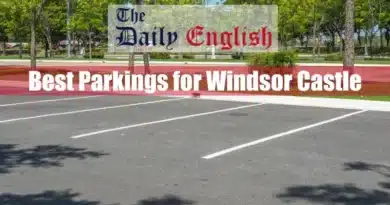
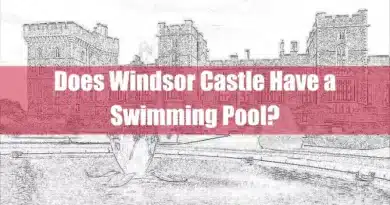
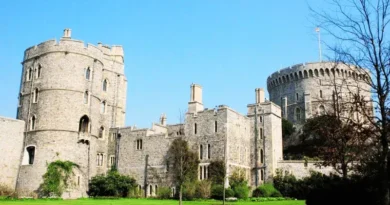
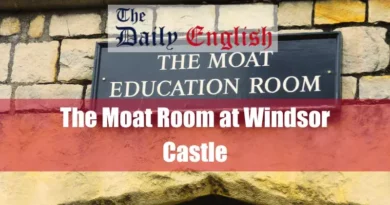

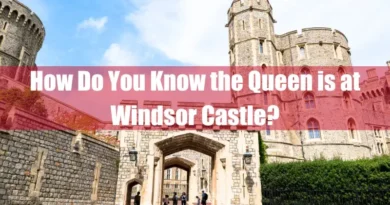
Comments are closed.